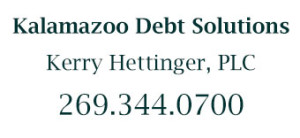Can chapter 13 save my home from foreclosure?
Can chapter 13 help me save my house from foreclosure?
The short answer in most cases is yes. In most cases a client who comes in to see us can save their home from foreclosure by filing a chapter 13 petition.
Before we answer that question for you personally, we first need to meet together. I am happy to offer a free in office consultation so we can sit down and discuss your concerns together.
We will spend the first five to ten minutes of that meeting reviewing your personal situation to evaluate if such an attempt makes sense. If it does (and eight out of ten times it does), then I spend another half hour or so gathering basic information about debts, possessions, income and living expenses. Either way the meeting is free.
At the end of that first meeting together I will go over carefully with you a list of documents to gather together so that we can prepare for the next meeting; which is the signing meeting.
In a chapter 13, the client generally need only pay the initial costs to get filed, which adds up to only $335. My attorney fees can be paid by the chapter 13 trustee out of monies funding the chapter 13 plan.
Now how does it all work? How can a chapter 13 save your home?
I find almost all of my clients fall behind their home payments during a time of severe life experiences. Clients that come to see me have suffered family, health or job loss. In many cases it is two or three types of loss at once.
As life then begins to come back together, the client realizes the debt burden grew so great that even though the issues may now be better, the resolution of their major life concerns are a dollar short and a day late.
That’s where the chapter 13 comes in. The filing of the case stretches both the money you have to deal with the situation and the time you have to get it all done. In a chapter 13, one simply begins to make the normal mortgage payment to the chapter 13 trustee and we then reshape the arrears (and all other debt) into the remainder of an affordable monthly chapter 13 payment.
For example, a $6,000 home arrears situation (requiring $6,000 to cure the home mortgage) can be dealt with by a low payment of only $100 a month over 60 months plus a little interest. We can often find great relief on items like high interest car loans. Such clients retain their cars even though we reduce interest and restructure payments into affordable payments within the plan.
Most chapter 13 payments then include the monthly mortgage payment, some amount to deal with all the other debt, and then a small amount to fund administrative costs of the chapter 13. We discuss this together at the beginning of the first meeting and then continue working on it so that by the end of the second meeting a client has not only a good idea of what the chapter 13 payment will be, but they will also see how they can afford to make the payment.
Again, not every case succeeds. However the majority of my clients are successful in keeping their homes and vehicles. My goal and mission is to be as realistic as possible, as early as possible, so that my clients are armed with a real understanding of what can and cannot be done as soon as possible.
Chapter 13 is our favorite bankruptcy chapter. It is a great way to deal with almost all forms of debt, stretch your payments out so they are affordable and keep the items most important (such as your house and car). As such a blog can only cover the very basics, I invite you to meet with me to see how it may help in your personal situation.
Please accept our invitation to call for your free office consultation at your earliest convenience.
